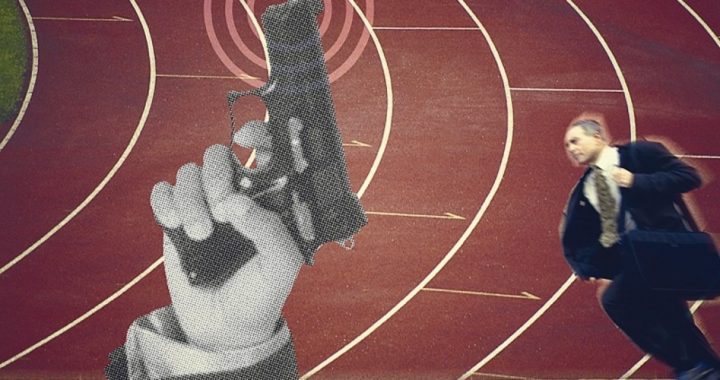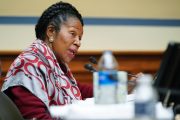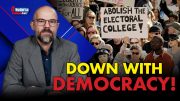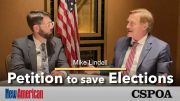
Following the Sandy Hook Elementary School shootings, President Obama confirmed his intentions to infringe on people’s Second Amendment rights in his eulogy for the victims on Sunday night following the attack:
We can’t tolerate this anymore. These tragedies must end. And to end them, we must change. We can’t accept events like this as routine.
Are we really prepared to say that we’re powerless in the face of such carnage, that the politics are too hard? Are we prepared to say that such violence visited on our children year after year after year is somehow the price of our freedom? Can we honestly say that we’re doing enough to keep our children, all of them, safe from harm?
If we’re honest with ourselves, the answer is no. We’re not doing enough. And we will have to change.
To the Washington Post writers covering the event, this was a signal that the president would push for new laws restricting ownership of guns.
Up until the shooting, the president’s advisors correctly perceived that there was no political will to push his agenda for more gun controls. Philip Rucker, writing for the Washington Post a few days later, said that “the White House calculated that gun-control measures couldn’t pass [the current] Congress, and President Obama’s political strategists determined that it was best for him, and for the Democratic Party, if the issue was put off until after the 2012 election.” Coincidentally and fortuitously for the president and his agenda, the shooting in Connecticut took place just 39 days after the election, giving the president the opportunity he had been seeking.
That “signal” was not lost on citizens across the country, who immediately flocked to gun stores to get ahead of any potential legislation that might restrict their rights. For example, Rick Hawkins, the owner of Boots and Buckshot in Cartersville, Georgia, said that sales at his gun store increased 600 percent in the week after the shooting, and that sales would have even been higher except that he ran out of inventory.
Many are aware, as Thomas Sowell noted in his column that gun control laws do not control guns, they control people owning guns, and that “they simply disarm law-abiding citizens, while people bent on violence find firearms readily available [elsewhere].”
At present, guns similar to that allegedly used in the Connecticut shooting, AK-47s, may legally be purchased and owned by citizens after passing a background check. The 1994 Federal Assault Weapons Ban specifically banned the domestic manufacture of AK-47s but the law expired on September 13, 2004.
If such a ban were to be implemented once again, or worse, what would be the likely outcome? According to the 2003 Small Arms Survey, published annually in Geneva, Switzerland, not much would change. In Belgium, there were 458,000 registered firearms, while another two million were unregistered. In France, 2.8 million firearms were registered out of an estimated 18 million. In Germany, 7.2 million firearms were registered out of a total of 24 million. And in the United Kingdom, there were 1.8 million registered, out of a total of six million.
The black market is the natural response to such alleged attempts to restrict ownership of weapons. The demand for guns is met through smuggling, through theft from weapons manufacturers, through bribing government officials, and through private manufacturing. For example, the small town of Danao in the Philippines has been a leader in manufacturing guns for world trade since 1905, and that industry is now such an important part of the economy there (employing as much as 20 percent of the workforce) that it is officially sanctioned by the government of the Philippines.
And technology in 3D printing has advanced so much that individuals will soon be able to build their own weapons at home. As noted in an article the British newspaper the Telegraph, this will “make it a whole lot easier for people without gun licenses to build a high-quality, unregulated weapon.”
J.D. Tuccille, managing editor of Reason magazine, admitted that his family, immigrants from Europe before the turn of the century, always had weapons that they never bothered to register even after the Sullivan Law was passed in 1905. He admitted, “We got to this country — most of my ancestors, anyway — just about the time the Sullivan Act became law. Which means that carrying and brandishing of weapons took place despite the law, because nobody in my family bothered to get a pistol permit through several generations of residency in New York City.”
When Tuccille applied for a permit to buy a semi-automatic weapon in New York City, he found himself frustrated at every turn. He assumed that the gun shop had the proper connections with the authorities — he called them “expediters” — who would be influenced by financial considerations (bribes), but even that didn’t seem to work.
Explained Tuccille:
Even so, I waited. And I waited. And I finally blew my stack.
As the saying goes, I knew a guy who knew a guy. It took an email, a phone call, and a friendly meeting, and for less than 300 bucks, I was the proud owner of a semi-automatic variant of an AK-47 — strictly verboten in New York City.
And it cost me about a third of the usual price.
He learned something else about doing business in the black market in New York City: The sellers were much easier to deal with as well. “As it turned out, the illicit rifle was not only cheaper and easier to obtain … but the seller was much more pleasant to deal with than the cops administering the official process.”
Today, many more guns are owned illegally within the boundaries of New York City than are owned legally. Tuccille estimates that there a roughly 37,000 licensed handgun owners and about 21,000 rifle and shotgun licenses in the city, but unregistered, “illegal” guns are at about two million.
The black market provides the supply where the demand is sufficiently strong. It’s a basic rule of human nature. Says Tuccille: “If people are keeping firearms in defiance of their government’s wishes, they obviously want to own guns no matter what the powers-that-be intend.”
In Pakistan, for instance, there is a thriving industry in manufacturing modern firearms, produced by pre-teens “making guns with their bare hands in caves” according to Suroosh Alvi, a co-founder of Vice magazine, who pulled some strings to get into the Northwest Frontier Province to see for himself. Thousands of 9mm pistols, copies of AK-47s, machine guns, and ammo to feed them are manufactured there over wood fires using simple hand tools. It’s the black market at work.
As a result the problem facing would-be gun confiscators, the Obama administration included, is huge. According to the same 2003 Small Arms Study,
The largest numbers of publicly owned firearms continue to be found in the United States, where there are an estimated 238 million to 276 million private firearms. With roughly 83 to 96 guns for every 100 people, the United States is approaching a statistical level of one gun per person.
In a worst case scenario, provided by Professor James B. Jacobs of New York University and author of the book Can Gun Control Work?,
Prohibiting possession would require disarming the citizenry; whether done quickly or over a long period, it would be a monumental challenge, fraught with danger. Millions of citizens would not surrender their handguns.
Even if the Obama administration was able to get traction on any significant restrictions on gun ownership (a highly dubious proposition at best), there would be inevitable pushback. As Tuccille notes:
Given a choice between complying with restrictions on firearms ownership and defying the law, a clear majority of people in most jurisdictions have chosen rebellion. The tighter the law, the more obvious the rebellion.
Despite the now-obvious intentions of the Obama administration to wage its long-sought war on guns, private ownership of private unregistered (and therefore untraceable) weapons will likely continue to increase, thanks to those intentions.
A graduate of Cornell University and a former investment advisor, Bob is a regular contributor to The New American and blogs frequently at www.LightFromTheRight.com, primarily on economics and politics. He can be reached at [email protected].



